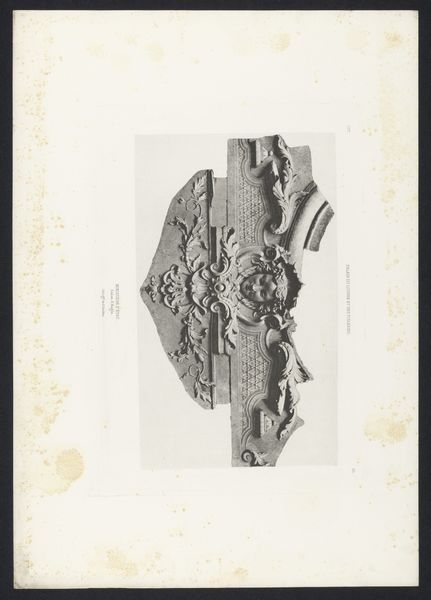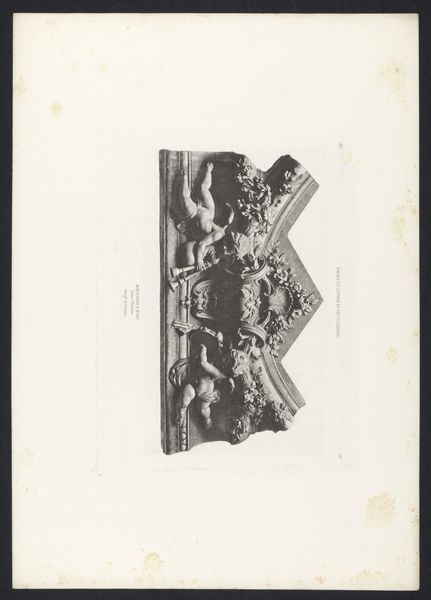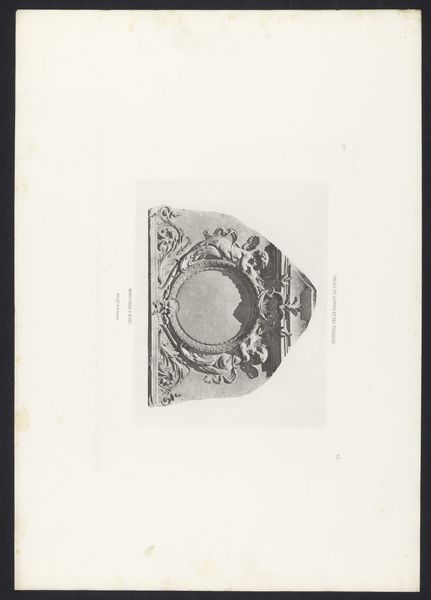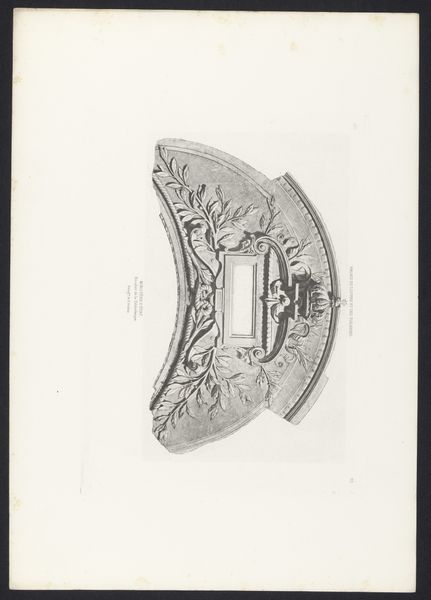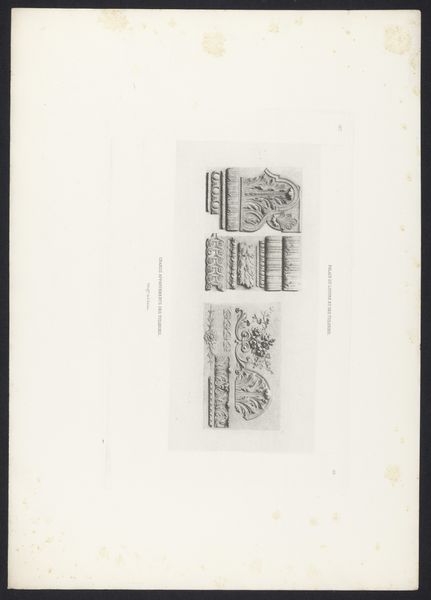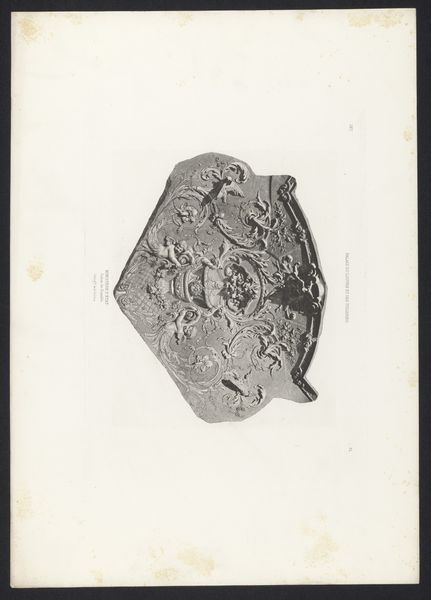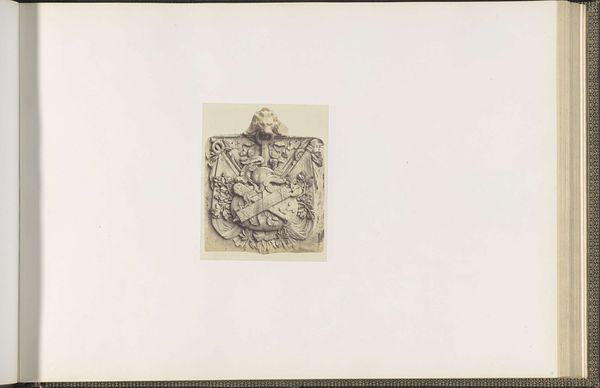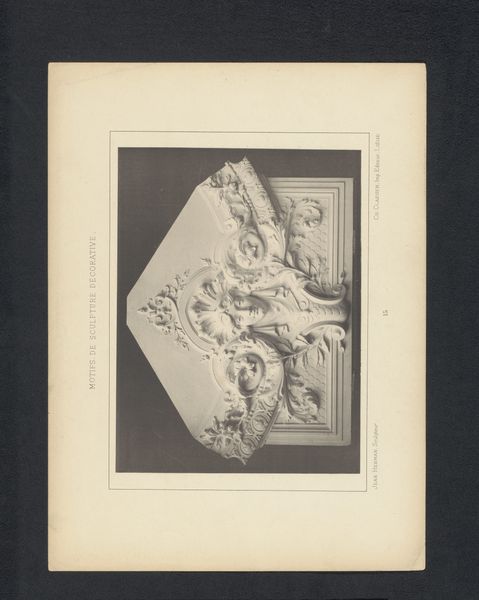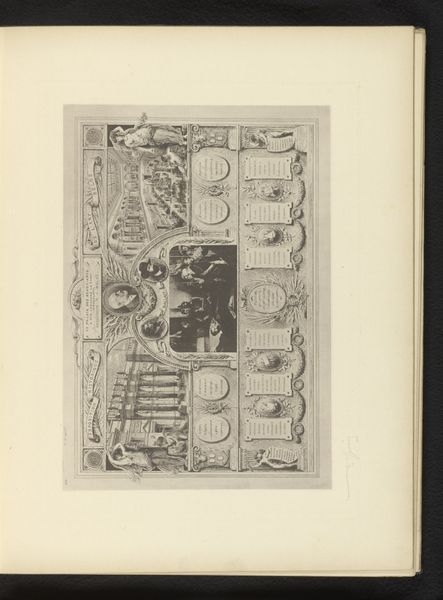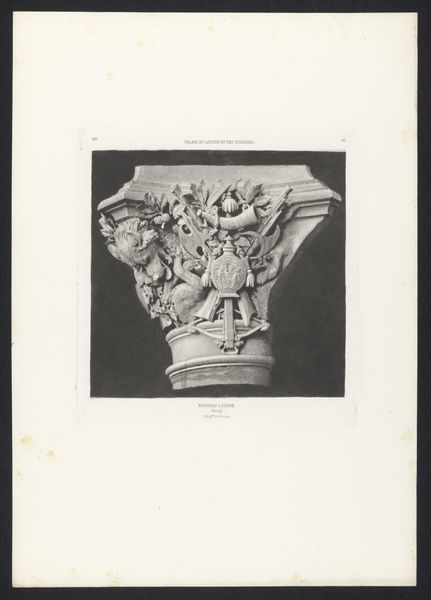
Fotoreproductie van een tekening, voorstellende een kapiteel met dierornamenten voor de Salle du Manège in het Palais du Louvre te Parijs before 1870
0:00
0:00
edouardbaldus
Rijksmuseum
Dimensions: height 180 mm, width 221 mm
Copyright: Rijks Museum: Open Domain
Curator: I'm drawn to the sheer volume of detail crammed into this old photogravure—all these tangled emblems, fighting for space. It almost feels claustrophobic. Editor: That intensity, that tightly packed symbolism, that’s classical architecture for you. This photogravure captures a drawing of a capital—the sculpted top of a column—destined for the Salle du Manège at the Louvre Palace, likely dating from before 1870. Notice how Baldus chose to highlight it; he seems to capture a ghost. Curator: A ghost is right! It’s like someone trying to remember a dream, isn’t it? The Louvre – this seat of power – filtered through layers: architecture, drawing, photo reproduction, then finally arriving here in the 21st century… that’s powerful, you know? All this receding context. Editor: Consider the specific language it’s employing, all these symbolic details speaking directly to ideas about leadership and nation. We see laurel wreaths connoting triumph, intertwined with fasces that signified authority and unity in ancient Rome – and adopted during the French Revolution. See how history literally supports the room in this very direct form. Curator: That's exactly the mood. It feels almost propagandistic, this insistence on visual pronouncements and proclamations... I feel a tiny bit rebellious looking at it now. I’m tempted to deface it with graffiti or add emojis to its surface! Editor: I see it differently. Instead, I see a conversation. What if Baldus captured that historical voice only to reveal it now, in our moment, for it to be reshaped by our own visual languages and ideologies? The neoclassical vocabulary of symbols is quite intentional. It aims to present authority, of course, yet it does so by reaching back into a shared, classical memory. And those memories evolve and change as they travel, generation after generation. Curator: Hmmm, so the symbols carry on, regardless? It's like these historical artifacts whisper into the present, prompting new readings… maybe even provoking a little bit of constructive mischief! I take back defacing it. For now. Editor: Exactly! What you’re sensing, I think, is that very transmission across time.
Comments
No comments
Be the first to comment and join the conversation on the ultimate creative platform.

